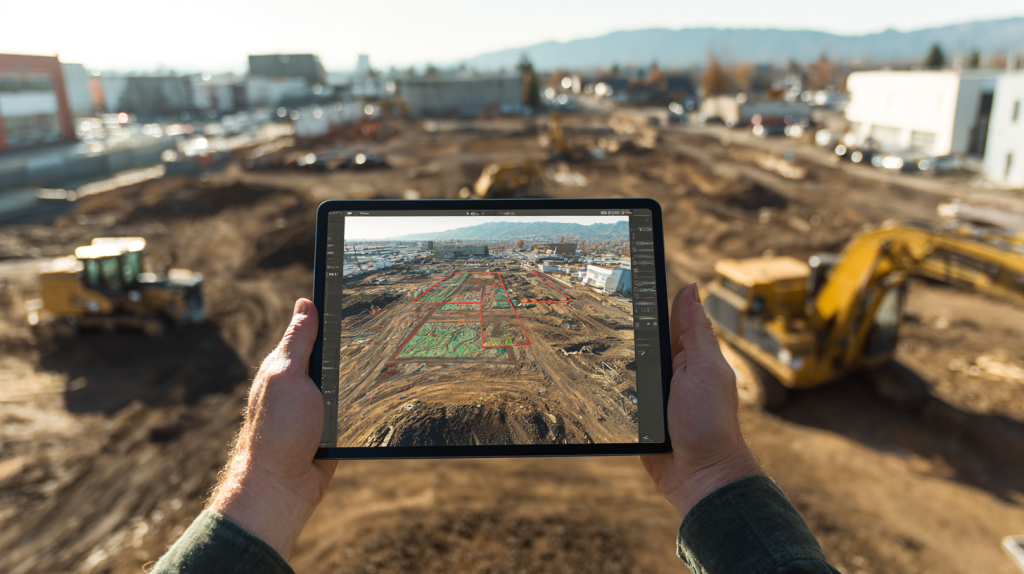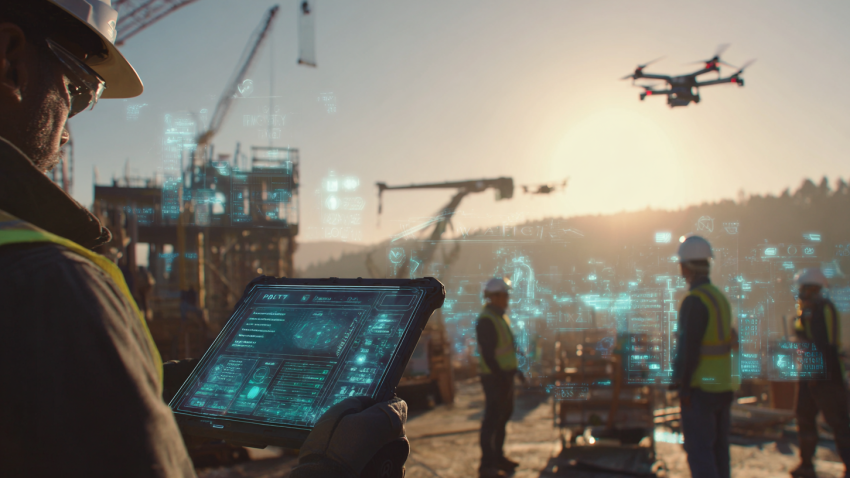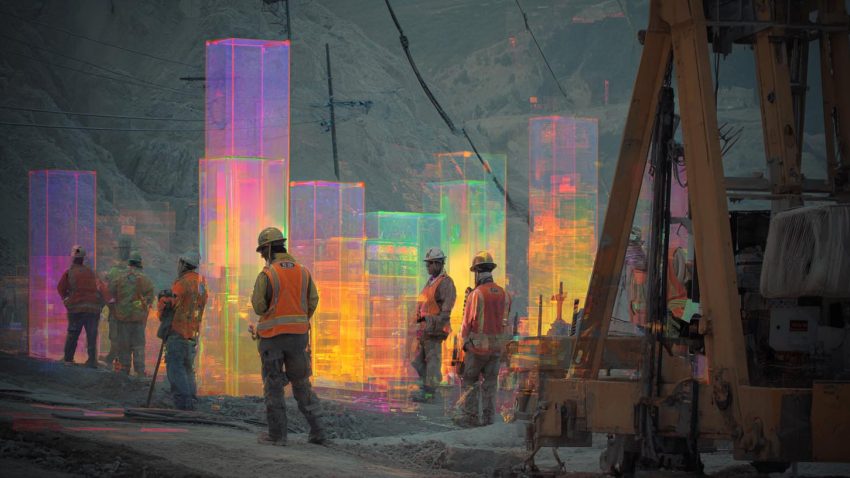How Superintendents Manage Power, Cooling, and Equipment Coordination in Hyperscale Data Center Projects
Table of Contents:
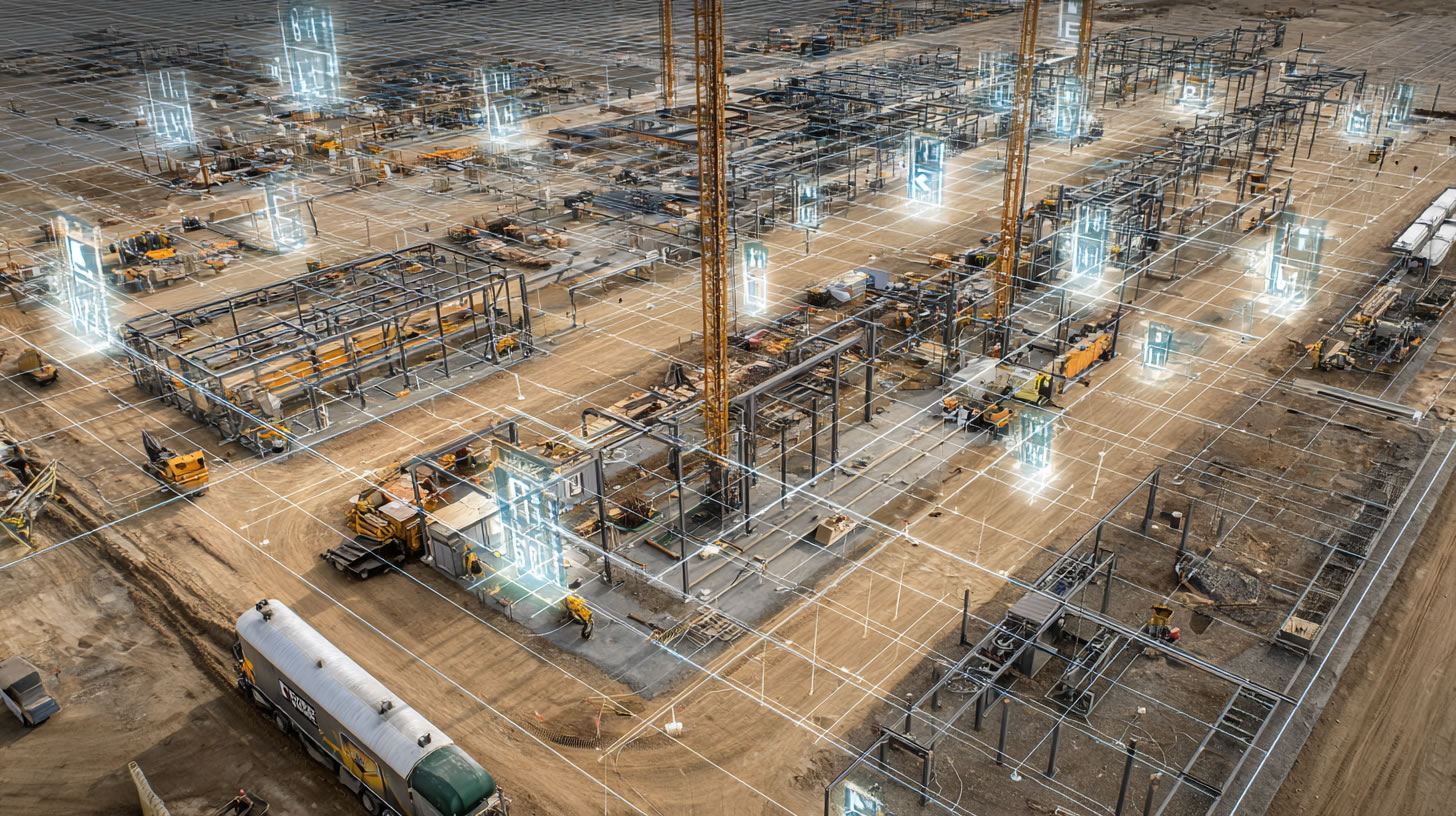
Hyperscale data centers are among the most complex construction environments in the world. Every decision must balance uptime reliability, energy efficiency, and precision installation across thousands of interconnected components. For superintendents, coordinating power, cooling, and equipment systems isn’t just another task—it’s the backbone of mission-critical performance.
Power infrastructure alone can represent half a project’s total value. Massive generators, uninterruptible power supply (UPS) systems, and switchgear must be sequenced with pinpoint accuracy. Cooling systems—chillers, CRAH units, and containment aisles—must be installed in perfect harmony with electrical and structural work. Add to that hundreds of deliveries, high-voltage safety standards, and overlapping trades, and you have one of construction’s toughest coordination challenges.
Modern data center projects rely on digital tools and real-time planning to keep these operations synchronized. Superintendents use Building Information Modeling (BIM), GIS mapping, and logistics platforms such as StruxHub to visualize equipment routes, schedule deliveries, and manage safety across every phase.
In this article, we’ll explore how superintendents manage the critical relationship between power, cooling, and equipment coordination on hyperscale sites. You’ll learn which strategies keep high-density builds efficient, how logistics and safety intersect, and how technology makes the impossible manageable.
Why Power and Cooling Systems Define Mission-Critical Construction
Every hyperscale data center is designed around two fundamental lifelines—power and cooling. Without stable electrical distribution and efficient heat removal, uptime targets collapse. Superintendents oversee the integration of these systems from day one, ensuring every piece of equipment supports the facility’s Tier III or Tier IV reliability goals.
Electrical coordination begins at the utility tie-in and extends through generators, UPS modules, and switchgear lineups. Cooling coordination involves massive chillers, pumps, and containment systems that must fit within tight tolerances. These two systems run in parallel, demanding meticulous sequencing to avoid clashes between mechanical and electrical trades.
Top Benefits
- Ensures continuous power and temperature stability for 24/7 operations.
- Reduces installation errors by aligning mechanical and electrical sequencing.
- Enhances energy efficiency through precise equipment layout.
Best Practices
- Conduct joint MEP coordination meetings weekly.
- Validate BIM models with field laser scans before installation.
- Plan redundancy (N + 1 or 2N) early to prevent last-minute redesigns.
Q&A Mini Section
Q: Why are power and cooling systems installed together?
A: Because both rely on synchronized electrical and mechanical infrastructure; delays in one directly affect the other.
Q: What’s the biggest challenge in coordinating them?
A: Maintaining redundancy while keeping layouts compact and serviceable.
Q: How early should cooling design start?
A: As early as electrical planning—the two systems must evolve in parallel to balance loads and space.
Power and cooling coordination set the tone for the project—get them right, and every other trade falls into rhythm.

How Superintendents Coordinate MEP Trades on Hyperscale Projects
Mechanical, electrical, and plumbing (MEP) systems are the heartbeat of mission-critical construction. For superintendents, managing MEP coordination means aligning hundreds of workers across multiple trades, each dependent on the other’s progress.
Coordination starts with preconstruction modeling. BIM and clash detection software identify overlaps between conduits, ducts, and piping before they hit the field. Once construction begins, superintendents use look-ahead schedules and zone-based sequencing to keep crews organized. Daily stand-ups and shared dashboards ensure every foreman knows where their team fits into the broader plan.
The biggest challenge is sequencing heavy-duty components—switchgear, generators, and chillers—that require specialized rigging and precise timing. Any delay in MEP installation can cascade into schedule overruns. Successful superintendents balance efficiency with redundancy testing and commissioning timelines.
Top Benefits
- Prevents trade interference through proactive clash detection.
- Keeps large mechanical and electrical deliveries aligned with site readiness.
- Strengthens communication among subcontractors and inspectors.
Best Practices
- Maintain unified MEP drawings accessible to all trades.
- Use color-coded field maps for routing and access control.
- Hold coordination meetings focused on upcoming milestones, not completed work.
Q&A Mini Section
Q: How do superintendents keep trades aligned?
A: Through daily coordination huddles, real-time updates, and transparent milestone tracking.
Q: What happens if MEP sequencing slips?
A: Electrical testing and commissioning are delayed, impacting turnover dates and SLAs.
Q: Why is early collaboration essential?
A: Because layout conflicts discovered in the field are ten times costlier to fix than in design.
Effective MEP coordination turns complexity into flow—ensuring the site runs like a finely tuned power plant.
Sequencing Deliveries for Generators, UPS, and CRAC Units
Mission-critical construction lives or dies by logistics. Massive equipment deliveries—generators, transformers, UPS systems, and CRAC (Computer Room Air Conditioning) units—require precision timing and exact placement. Superintendents orchestrate this ballet to keep materials moving without disrupting other trades.
Each piece of major equipment often weighs several tons and demands specialized rigging, access clearances, and pre-poured foundations. Sequencing begins months in advance: delivery schedules are aligned with concrete curing, enclosure installation, and electrical tie-ins. AI-enabled logistics systems like StruxHub can forecast delivery conflicts, track shipments via GPS, and update laydown zones in real time.
Proper sequencing not only protects the schedule but also enhances safety. Controlled timing prevents congestion and ensures cranes and forklifts operate within defined zones.
Top Benefits
- Prevents costly downtime from mis-timed deliveries.
- Improves safety by coordinating crane and rigging operations.
- Keeps mechanical and electrical installation on continuous flow.
Best Practices
- Lock delivery schedules at least 90 days ahead.
- Use digital logistics dashboards to monitor shipment status.
- Pre-plan laydown and rigging routes to minimize on-site movement.
Q&A Mini Section
Q: Why are generator and UPS deliveries so critical?
A: Because they’re long-lead items that directly impact commissioning and final energization dates.
Q: How do AI tools help with delivery planning?
A: They analyze weather, traffic, and supplier data to adjust arrival times automatically.
Q: What’s the best way to avoid site congestion?
A: Schedule staggered deliveries and enforce gate-booking through a centralized logistics platform.
Sequencing heavy equipment is where planning meets precision—every successful data center project depends on it.

StruxHub
Experience the power of StruxHub today and witness firsthand how it can revolutionize your construction operations.
Safety and Quality Standards for Mission-Critical Systems
In mission-critical construction, safety and quality control aren’t optional—they are contractual guarantees. Power and cooling systems must operate flawlessly from the first day of commissioning, and any oversight can compromise uptime for data center operators. For superintendents, maintaining these standards requires strict adherence to safety regulations, installation tolerances, and verification procedures.
Heavy electrical and mechanical installations bring unique risks: high-voltage exposure, confined spaces, crane lifts, and rigging hazards. Crews must follow OSHA and NFPA 70E protocols, while QA/QC teams verify every termination, weld, and anchor point. Safety and quality checks often occur simultaneously with installation, ensuring that errors are corrected immediately rather than discovered during testing.
Superintendents also oversee redundancy testing—verifying that backup systems like generators and UPS units kick in instantly under simulated outages. These validations prove system reliability before handover.
Top Benefits
- Prevents injuries and equipment damage during high-risk operations.
- Guarantees compliance with safety and commissioning standards.
- Ensures operational readiness through rigorous pre-handover testing.
Best Practices
- Integrate safety inspections into daily task planning.
- Use digital QA/QC checklists for real-time verification.
- Perform mock commissioning before client acceptance testing.
Q&A Mini Section
Q: What safety standards govern mission-critical projects?
A: OSHA, NFPA 70E, and ANSI standards are commonly applied, alongside project-specific owner requirements.
Q: How does QA/QC affect scheduling?
A: Early inspections minimize rework, reducing the risk of costly delays near commissioning.
Q: Why is redundancy testing critical?
A: It validates uptime performance—failure during live operation can cause millions in lost data revenue.
Safety and quality are the last lines of defense in mission-critical construction, and superintendents ensure they’re never compromised.
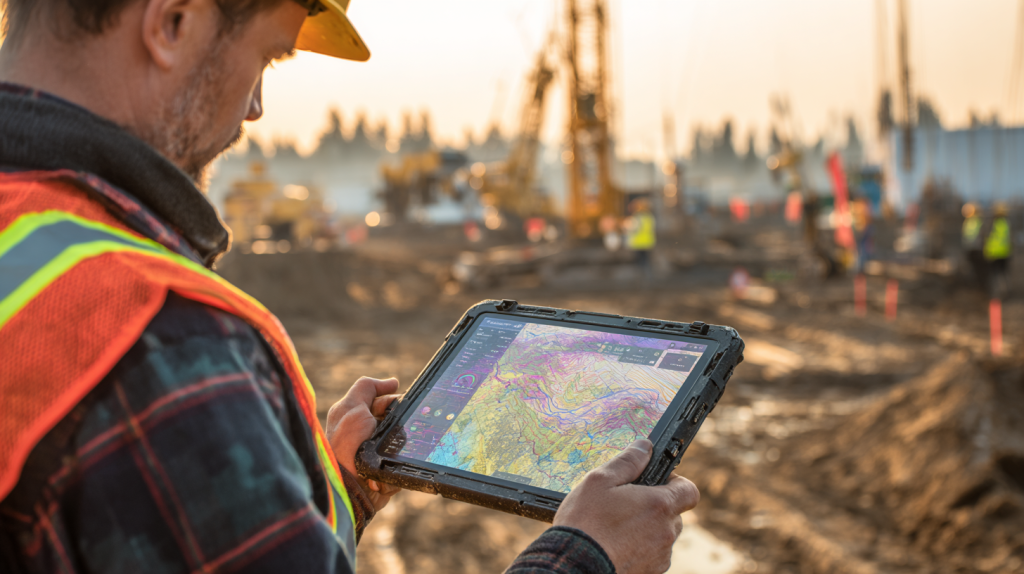
How Superintendents Manage Testing, Commissioning, and Turnover
Testing and commissioning mark the transition from construction to operation. For superintendents, this phase represents the culmination of months of coordination across power, cooling, and control systems. Each component must perform flawlessly before the data center can go live.
The process follows a phased commissioning model:
- Level 1: Factory acceptance testing (FAT).
- Level 2: Installation verification.
- Level 3: Functional testing of subsystems.
- Level 4: Integrated system testing.
- Level 5: Full operational handover to the owner.
Superintendents coordinate between contractors, commissioning agents, and equipment vendors to keep each phase aligned with the schedule. Digital tools simplify documentation by linking test results, punch lists, and inspection reports in one place.
When properly managed, commissioning not only proves system readiness but also validates construction quality, ensuring the data center achieves its intended performance metrics from day one.
Top Benefits
- Confirms system functionality and reliability before operation.
- Reduces post-handover maintenance issues and rework.
- Streamlines closeout through digital documentation and tracking.
Best Practices
- Schedule commissioning in parallel with final installation activities.
- Assign dedicated QA/QC liaisons for each system.
- Store all test data and reports within a centralized platform.
Q&A Mini Section
Q: What’s the biggest commissioning challenge?
A: Coordinating multiple vendors and ensuring every system integrates correctly without schedule overlap.
Q: Why document every test digitally?
A: It creates traceable proof of performance for both contractors and owners.
Q: When should commissioning agents get involved?
A: During early construction—late engagement increases risks and costs.
Effective commissioning coordination ensures hyperscale data centers start strong, reliable, and ready for 24/7 demand.
How Technology Improves Equipment Coordination and Delivery Precision
Technology is redefining how superintendents manage equipment logistics on hyperscale data center projects. With advanced planning tools, digital twins, and AI-powered analytics, site leaders can monitor every delivery, crane pick, and installation from their devices.
Digital twins—virtual replicas of the site—allow teams to simulate equipment paths, crane setups, and laydown logistics before they happen. AI and IoT sensors track real-time delivery progress, analyze weather or traffic conditions, and adjust schedules automatically. These predictive insights prevent bottlenecks and ensure equipment arrives just in time.
GPS-based tracking systems also improve accountability. Superintendents can verify where materials are located, when they’ll arrive, and how they’ll be installed—reducing idle time and miscommunication between field and office teams.
By connecting planning data with field execution, technology turns complex logistics into a smooth, predictable process that minimizes downtime and safety risks.
Top Benefits
- Improves delivery accuracy through predictive analytics.
- Enables real-time visibility for materials and heavy equipment.
- Reduces rework and downtime with precise sequencing.
Best Practices
- Use AI-based logistics software integrated with GPS tracking.
- Update crane and rigging plans using digital twin simulations.
- Review delivery routes weekly to account for site changes.
Q&A Mini Section
Q: What’s the advantage of using a digital twin?
A: It allows teams to test equipment routes virtually, avoiding costly errors in the field.
Q: Can technology prevent delivery delays?
A: Yes—AI tools can forecast and adjust for traffic or weather disruptions before they occur.
Q: How does GPS tracking help superintendents?
A: It provides real-time location data for deliveries, ensuring crews are ready when materials arrive.
Technology empowers superintendents to make data-driven decisions, increasing coordination precision and project reliability.
StruxHub
Discover how StruxHub can revolutionize your construction management. Contact us today!
How StruxHub Simplifies MEP and Equipment Coordination for Superintendents
Managing power, cooling, and heavy equipment installations on a hyperscale project requires constant coordination—and that’s where StruxHub delivers measurable value. The platform centralizes scheduling, delivery tracking, and field coordination into one real-time dashboard built specifically for superintendents.
With StruxHub, crews can book delivery gates, track shipments, and update crane routes directly from mobile devices. AI-assisted scheduling tools detect potential clashes between mechanical and electrical activities, allowing superintendents to adjust sequencing before delays occur.
StruxHub also integrates with BIM and GIS data, letting users visualize equipment layouts and access constraints in 3D. Safety checklists and QA/QC records can be attached directly to specific zones, ensuring all documentation stays organized and accessible during commissioning.
By connecting logistics, coordination, and communication in one system, StruxHub helps superintendents maintain control of complex projects without drowning in paperwork or manual updates.
Top Benefits
- Centralizes logistics, scheduling, and field coordination in one place.
- Provides predictive insights into delivery and sequencing conflicts.
- Links QA/QC and safety data directly to equipment zones.
Best Practices
- Use StruxHub’s AI features for early conflict detection.
- Connect BIM data for 3D visualization of layouts and routes.
- Encourage subcontractors to update delivery and progress data daily.
Q&A Mini Section
Q: How does StruxHub improve real-time coordination?
A: It synchronizes scheduling, deliveries, and field updates so every stakeholder works from the same information.
Q: Can StruxHub integrate with existing BIM or scheduling tools?
A: Yes—it connects seamlessly with platforms like Revit, Navisworks, and Primavera for unified project management.
Q: What’s the main benefit for superintendents?
A: Full visibility—StruxHub gives them control over every movement of people, materials, and equipment.
By simplifying complex coordination, StruxHub helps mission-critical teams meet the precision, safety, and reliability demands of hyperscale data center construction.

FAQ
Why is power and cooling coordination so critical in hyperscale data center construction?
Power and cooling systems are the lifelines of any data center. Unlike typical commercial buildings, hyperscale facilities operate 24/7 and handle massive computational loads that generate extreme heat. Coordinating these systems ensures the entire operation stays stable and efficient without downtime.
The challenge is scale and interdependence. Power systems feed enormous loads through generators, UPS units, and switchgear, while cooling systems—chillers, CRAHs, and containment aisles—dissipate that energy to keep server temperatures within tight tolerances. A failure in one system can cascade through the other, compromising uptime and violating Service Level Agreements (SLAs).
Superintendents play a key role in sequencing installations, ensuring electrical and mechanical trades don’t interfere with each other’s work. Coordination meetings, BIM models, and site inspections are all part of synchronizing these systems. Once installed, QA/QC verification and integrated commissioning confirm that power and cooling function flawlessly under stress.
In short, power and cooling coordination isn’t just about construction efficiency—it’s about ensuring reliability for billion-dollar operations that can’t afford a single second of downtime.
How do superintendents sequence equipment deliveries for mission-critical systems?
Sequencing heavy mechanical and electrical equipment requires a balance of timing, precision, and safety. Generators, switchgear, chillers, and UPS systems often arrive from multiple vendors across the world, each with specific delivery and installation requirements.
Superintendents start planning months ahead, aligning delivery schedules with foundation readiness, crane availability, and rigging logistics. They work closely with suppliers and logistics partners to define exact delivery windows and site access routes. Using digital tools such as StruxHub, they can track shipments in real time and adjust laydown or crane operations if delays occur.
Proper sequencing ensures that equipment moves directly from transport to installation—minimizing double handling and storage congestion. Superintendents also coordinate with safety teams to enforce exclusion zones during lifts or offloads, reducing risk.
AI-enabled scheduling now adds another layer of precision. Predictive analytics can anticipate conflicts, such as overlapping deliveries or bad weather, and automatically suggest new time slots.
By sequencing deliveries methodically, superintendents keep installation continuous, equipment protected, and schedules intact—preventing costly delays that can ripple through commissioning.
What are the key safety and quality control practices during MEP installation?
Safety and quality control (QA/QC) are non-negotiable in hyperscale construction. The risks are high—high-voltage systems, heavy lifts, and confined mechanical spaces—so superintendents must enforce strict procedures throughout the build.
Every activity begins with a Job Hazard Analysis (JHA) to identify potential risks. Workers receive daily safety briefings that align with the project’s logistics and work zones. Electrical teams follow NFPA 70E protocols for arc-flash protection, while mechanical crews ensure proper rigging and load checks before lifting operations.
Quality assurance runs in parallel. Each component—cables, piping, valves, welds, and terminations—is inspected against manufacturer and project specifications. QA/QC inspectors use digital forms and photo verification tools to record compliance in real time. These checks prevent errors from reaching the commissioning stage, where rework can cost time and millions of dollars.
Superintendents also ensure that redundant systems are tested under simulated loads before handover. This dual focus on safety and quality guarantees that the facility’s critical systems not only function but perform reliably from day one.
How is commissioning managed on mission-critical projects?
Commissioning is the final and most crucial phase of mission-critical construction. It verifies that every power, cooling, and control system functions exactly as designed—and that all redundancy and failover mechanisms perform under stress.
Superintendents coordinate between construction teams, commissioning agents, and equipment vendors to follow a structured, multi-level process.
- Level 1: Factory Acceptance Testing (FAT) before delivery.
- Level 2: Field installation verification.
- Level 3: Functional testing of individual systems.
- Level 4: Integrated testing of subsystems working together.
- Level 5: Final operational testing and turnover.
Each stage requires meticulous documentation, often managed digitally through tools like StruxHub. Data collected from testing forms the permanent record of system performance.
Superintendents ensure testing sequences are properly scheduled, safety protocols are followed, and any deficiencies are resolved immediately. Once commissioning is complete, the data center is validated for uptime reliability and owner acceptance.
Effective commissioning coordination ensures mission-critical systems are ready for continuous operation—meeting the performance standards global data providers depend on.
How does StruxHub help superintendents manage coordination and logistics on hyperscale projects?
StruxHub is designed to simplify the complexity of managing large-scale construction projects—especially mission-critical builds like data centers. It centralizes logistics, scheduling, and field coordination into one real-time platform that superintendents can use from anywhere.
With StruxHub, deliveries for generators, chillers, and UPS units can be scheduled, tracked, and confirmed directly from the dashboard. AI tools flag potential clashes between trades or delivery routes, allowing adjustments before delays occur. Field crews receive mobile updates instantly, ensuring everyone is aligned with the latest schedule and layout.
StruxHub also integrates QA/QC tracking, safety checklists, and BIM overlays. This gives superintendents a complete picture of logistics, equipment status, and quality progress in one place. The result is less downtime, fewer communication gaps, and more control over complex workflows.
By turning coordination into a data-driven, automated process, StruxHub empowers superintendents to deliver hyperscale data centers faster, safer, and with higher precision—exactly what mission-critical construction demands.

StruxHub
Discover how StruxHub can revolutionize your construction management. Contact us today!
Related Pillar Articles:
Best Guide to Construction Logistics Plans (CLPs): What Owners Want to See Before Work Starts
